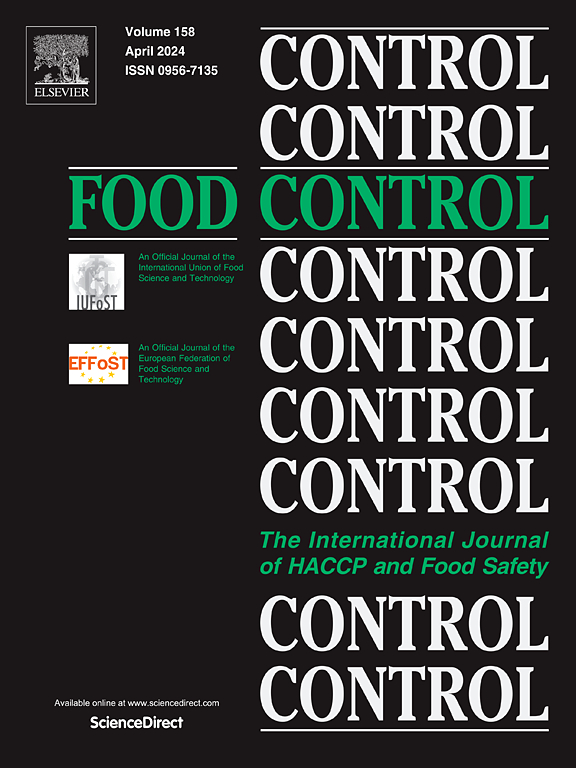Comparing deep and classical Chemometrics: can CNN enhance the accuracy of EVOO adulteration detection from spectral data?
IF 6.3
1区 农林科学
Q1 FOOD SCIENCE & TECHNOLOGY
引用次数: 0
Abstract
Extra virgin olive oil (EVOO) has a high economic value and is therefore susceptible to adulteration with oils of lower quality and price. Spectroscopy, although not recognized as an official analysis methodology in EVOO, can be used in rapid screening to detect adulterants. Predictive models are usually developed with classical chemometrics, which require human knowledge in feature engineering. Deep chemometrics overcome human intervention by relying on neural networks. This study compares the use of PLS (Partial Least Squares) and CNN (Convolutional Neural Network) algorithm in combination with FT-NIR (1000–2500 nm) and Vis-NIR (380–900 nm) spectroscopy to predict EVOO adulteration using four different seed oils (peanut, maize, sunflower and soya). Adulterant concentrations at 0.5 % and 1.5 % were difficult to distinguish, as the subtle spectral changes were often masked by a low signal-to-noise ratio mainly due to high spectral similarity with the pure EVOO, instrumental noise, and intrinsic oil variability. The FT-NIR-based regressions generally showed minimal performance differences between PLS and CNN, regardless of the application of spectral pretreatment or data augmentation (RMSEP = 0.99–2.08 %), indicating that for this spectral range, the added complexity of CNN offered no significant advantage. Only the model obtained using CNN and FT-NIR for peanut adulteration was not able to converge. In contrast, the Vis-NIR models based on CNN significantly outperformed the PLS models, regardless of the use of pretreatment or data augmentation. Therefore, in the present study, deep chemometrics proved not to be a universal replacement for classical chemometrics, but rather a complementary tool that demonstrates its true value where the classical approach is less effective.
深层化学计量学与经典化学计量学的比较:CNN能提高光谱数据EVOO掺假检测的准确性吗?
特级初榨橄榄油(EVOO)具有很高的经济价值,因此很容易与低质量和低价格的油掺假。光谱学虽然不被认可为EVOO的官方分析方法,但可以用于快速筛选检测掺假。预测模型通常是用经典的化学计量学来建立的,这需要人类在特征工程方面的知识。深度化学计量学依靠神经网络克服了人为干预。本研究比较了PLS(偏最小二乘法)和CNN(卷积神经网络)算法结合FT-NIR (1000-2500 nm)和Vis-NIR (380-900 nm)光谱预测四种不同种子油(花生、玉米、向日葵和大豆)的EVOO掺假情况。掺假浓度在0.5%和1.5%时很难区分,因为细微的光谱变化通常被低信噪比掩盖,这主要是由于与纯EVOO的高光谱相似性、仪器噪声和固有油变异性。无论使用光谱预处理还是数据增强,基于ft - nir的回归在PLS和CNN之间的性能差异通常很小(RMSEP = 0.99 - 2.08%),这表明在该光谱范围内,CNN增加的复杂性并没有显著的优势。只有用CNN和FT-NIR得到的花生掺假模型不能收敛。相比之下,无论使用预处理还是数据增强,基于CNN的Vis-NIR模型都明显优于PLS模型。因此,在本研究中,深度化学计量学被证明不是经典化学计量学的普遍替代品,而是一种互补工具,在经典方法不太有效的地方展示了其真正的价值。
本文章由计算机程序翻译,如有差异,请以英文原文为准。
求助全文
约1分钟内获得全文
求助全文
来源期刊

Food Control
工程技术-食品科技
CiteScore
12.20
自引率
6.70%
发文量
758
审稿时长
33 days
期刊介绍:
Food Control is an international journal that provides essential information for those involved in food safety and process control.
Food Control covers the below areas that relate to food process control or to food safety of human foods:
• Microbial food safety and antimicrobial systems
• Mycotoxins
• Hazard analysis, HACCP and food safety objectives
• Risk assessment, including microbial and chemical hazards
• Quality assurance
• Good manufacturing practices
• Food process systems design and control
• Food Packaging technology and materials in contact with foods
• Rapid methods of analysis and detection, including sensor technology
• Codes of practice, legislation and international harmonization
• Consumer issues
• Education, training and research needs.
The scope of Food Control is comprehensive and includes original research papers, authoritative reviews, short communications, comment articles that report on new developments in food control, and position papers.
 求助内容:
求助内容: 应助结果提醒方式:
应助结果提醒方式:


